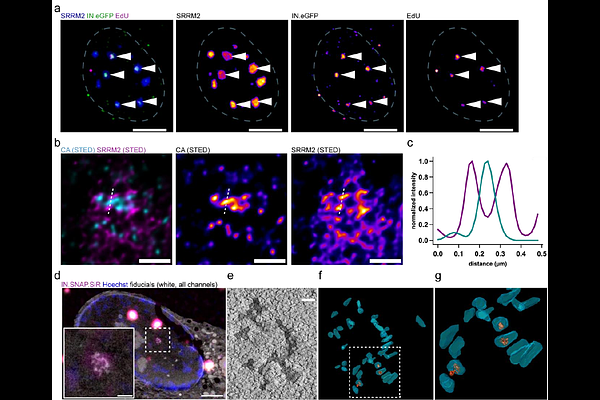Lenacapavir-induced capsid damage exposes HIV-1 genomes from nuclear speckles.

Lenacapavir-induced capsid damage exposes HIV-1 genomes from nuclear speckles.
Mueller, T. G.; Klaus, S.; Zila, V.; Nopper, S. L.; Golani, G.; Sonntag-Buck, V.; Heuser, A.-M.; Anders-Oesswein, M.; Schwarz, U. S.; Laketa, V.; Mueller, B.; Kraeusslich, H.-G.
AbstractFollowing cell entry, HIV-1 capsids enter the nucleus by passage through nuclear pores and reach nuclear speckles, where uncoating of the reverse-transcribed genome and integration occur. Here, we characterized the ultrastructure of HIV-1 subviral complexes in nuclei of primary monocyte-derived macrophages and cell lines using live-cell imaging, super-resolution microscopy and correlative light and electron tomography in the absence and presence of capsid-targeting inhibitors Lenacapavir and PF74. Capsid-like structures containing viral DNA as well as broken capsids clustered in nuclear speckles and were displaced from speckles by drug treatment. This was accompanied by alteration of the nuclear capsid structure, with electron-dense protrusions emanating from the narrow end of capsid cones and exposure of complete, or almost complete, genomic HIV-1 DNA. Our data indicate that synthesis of genomic dsDNA can be completed inside the closed HIV-1 capsid, and speckle-associated factors appear to be required to promote genome uncoating. This may ensure that genome uncoating occurs at optimal sites for integration into transcriptionally active chromatin. The results also shed further light on the mechanism of action of Lenacapavir.